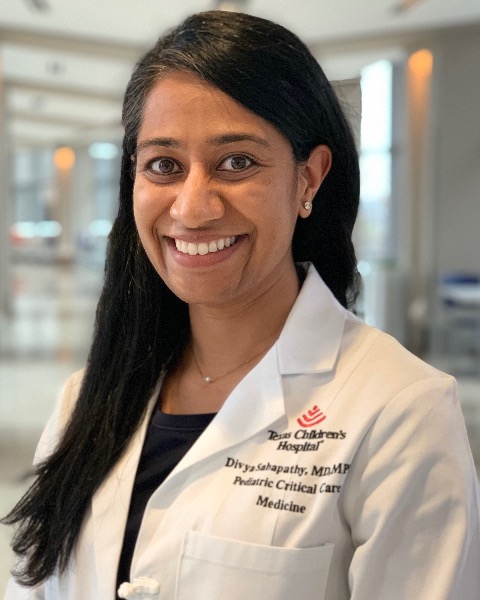Health Services Research
Category: Abstract Submission
Health Services Research II
206 - Exploring Value in Pediatric Liver Transplantation
Sunday, April 24, 2022
3:30 PM - 6:00 PM US MT
Poster Number: 206
Divya G. Sabapathy, Baylor College of Medicine, Houston, TX, United States; Fong W. Lam, Baylor College of Medicine, Houston, TX, United States; Moreshwar S. Desai, Baylor College of Medicine, Sugarland ,, TX, United States; Eric Williams, Texas Children's Hospital, Houston, TX, United States; John Goss, Baylor College of Medicine, Houston, TX, United States; Jean L. Raphael, Baylor College of Medicine, Houston, TX, United States; Michelle Lopez, Baylor College of Medicine, Houston, TX, United States

Divya G. Sabapathy, MD, MPH
Clinical Fellow
Baylor College of Medicine
Houston, Texas, United States
Presenting Author(s)
Background:
Understanding the economic milieu of pediatrics is vital to delivering high-value care, especially for children with complex and/or critical illness. Pediatric orthotopic liver transplant (OLT), while life-saving, is an expensive, resource-intensive intervention with center-specific variations in practice and outcomes. To maximize value, high-cost service lines with suboptimal outcomes or practice variation should be redesigned. Therefore, analysis of this population’s resource needs is warranted to guide performance improvement.
Objective: To examine resource utilization and outcomes in pediatric OLT patients nationally.
Design/Methods:
A retrospective review of OLT admissions included in the Pediatric Health Information System (PHIS) database from 2010 to 2020. Repeat and dual-organ transplants were excluded. Admitting and principle diagnosis codes were used to classify patients by underlying diagnosis. Demographics, resource utilization (length of stay (LOS), charges, charge categories), and outcomes (mortality) were described with summary statistics. Charges were categorized as clinical, pharmacy, radiology, laboratory, supply, and other (items not encompassed in other categories, like room charge). Charges were adjusted for Centers of Medicare & Medicare Services wage/price index by location.
Results:
3295 patients (age 0-21 years) received an OLT across 30 hospitals, with 64% under 5 years of age. Sixty-four percent had a specific underlying diagnosis, of which cholestatic (23%) and metabolic disorders (13%) were the most common. By APR-DRG classification, 90.7% of patients were considered as having major or extreme severity of illness, and 67% as major or extreme risk of mortality. Mortality during OLT admission was 2.4%. Median hospital LOS was 19 days (IQR 12-32), with ICU LOS of 6 days (IQR 3-12). Median total charge for an OLT was $479,491 (IQR $315,405 – $764,451). The highest charge categories were: other (37.3% of total charge; median $178,665; IQR $108,844 – $317,856), clinical (26%; $125,233; $89,907 – $173,143), and pharmacy (11.3%; $54,236; $27,124 – $109,786).
Conclusion(s):
This study describes the economic landscape of pediatric OLT, and is the first to consider the drivers of charge. Clinical and pharmacy charges reflect potential areas to prioritize for improvement since they may be affected by provider-directed care plans. Conversion of charges to cost, and regression analyses exploring the relationship between demographics and resource utilization, as well as cost and outcomes, are ongoing. Such data can inform future resource stewardship and high-value care initiatives.
Understanding the economic milieu of pediatrics is vital to delivering high-value care, especially for children with complex and/or critical illness. Pediatric orthotopic liver transplant (OLT), while life-saving, is an expensive, resource-intensive intervention with center-specific variations in practice and outcomes. To maximize value, high-cost service lines with suboptimal outcomes or practice variation should be redesigned. Therefore, analysis of this population’s resource needs is warranted to guide performance improvement.
Objective: To examine resource utilization and outcomes in pediatric OLT patients nationally.
Design/Methods:
A retrospective review of OLT admissions included in the Pediatric Health Information System (PHIS) database from 2010 to 2020. Repeat and dual-organ transplants were excluded. Admitting and principle diagnosis codes were used to classify patients by underlying diagnosis. Demographics, resource utilization (length of stay (LOS), charges, charge categories), and outcomes (mortality) were described with summary statistics. Charges were categorized as clinical, pharmacy, radiology, laboratory, supply, and other (items not encompassed in other categories, like room charge). Charges were adjusted for Centers of Medicare & Medicare Services wage/price index by location.
Results:
3295 patients (age 0-21 years) received an OLT across 30 hospitals, with 64% under 5 years of age. Sixty-four percent had a specific underlying diagnosis, of which cholestatic (23%) and metabolic disorders (13%) were the most common. By APR-DRG classification, 90.7% of patients were considered as having major or extreme severity of illness, and 67% as major or extreme risk of mortality. Mortality during OLT admission was 2.4%. Median hospital LOS was 19 days (IQR 12-32), with ICU LOS of 6 days (IQR 3-12). Median total charge for an OLT was $479,491 (IQR $315,405 – $764,451). The highest charge categories were: other (37.3% of total charge; median $178,665; IQR $108,844 – $317,856), clinical (26%; $125,233; $89,907 – $173,143), and pharmacy (11.3%; $54,236; $27,124 – $109,786).
Conclusion(s):
This study describes the economic landscape of pediatric OLT, and is the first to consider the drivers of charge. Clinical and pharmacy charges reflect potential areas to prioritize for improvement since they may be affected by provider-directed care plans. Conversion of charges to cost, and regression analyses exploring the relationship between demographics and resource utilization, as well as cost and outcomes, are ongoing. Such data can inform future resource stewardship and high-value care initiatives.
